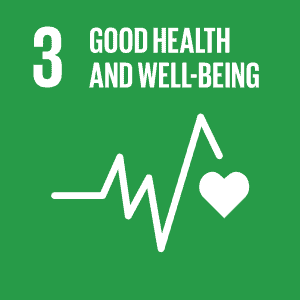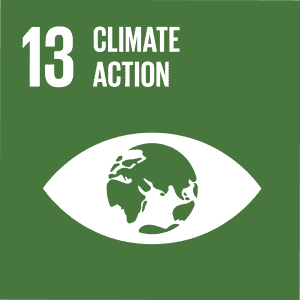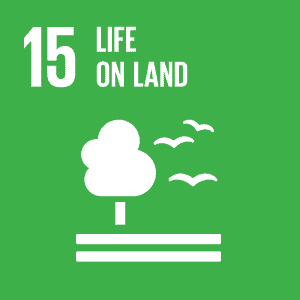Project Profile
Project Location
Richland County, OHProject Operator
Western Reserve Land ConservancyProject Type
PreservationProject Credits
14,408Credit Availability
AvailableProject Contact
Sarah Blakely sblakely@wrlandconservancy.orgWestern Reserve Land Conservancy (the “Land Conservancy”) is protecting the 94-acre Black Fork Forest in Richland County, OH. Located along a major interstate, the Project provides an important buffer for wetlands that drain to the region’s main water source, Charles Mill Lake. The site contains high-quality forest with a diverse assemblage of 65-year old trees including hickory, sugar maple, American beech, black cherry, American elm, and several species of oaks. Preservation of the forest will benefit wildlife habitat, improve air and water quality, and provide carbon sequestration. The Project provides important breeding, nesting, and foraging habitat for neotropical migrating birds as well as native Ohio birds that depend on the habitat year-round.
Richland County has had a high rate of conversion of forests to agricultural use and urban expansion. Protection of remaining intact forests, such as Black Fork Forest, is critical to retain the region’s natural heritage. The protection of Black Fork Forest will add to a nearly 4,120-acre corridor of protected green space including lands owned by Muskingum Watershed Conservancy District, Ashland County Park District, and Ashland University. The Land Conservancy also plans to complete restoration of adjacent former agricultural fields and enhance existing wetlands to further benefit the resources of the area.
This is the fourth project in Western Reserve Land Conservancy’s Carbon Program. Western Reserve Land Conservancy, an accredited land trust, is Ohio’s largest land trust with over 65,000 acres conserved across 24 Ohio counties. The Land Conservancy preserves natural resources that provide multiple environmental benefits and improve the quality of life for residents of Northeast Ohio. Carbon credits are an excellent extension of the Land Conservancy’s mission, furthering conservation goals that will benefit communities, increase valuable open space acreage, and preserve critical wildlife habitat.
Please visit the Bainbridge Forest, Sandy Cross, and Whittlesey Beach pages for information on other Western Reserve Land Conservancy projects.
Co-Benefits
Forest preservation projects not only reduce carbon dioxide from the atmosphere, but provide ecosystem services or co-benefits that can be quantified. The co-benefits from this project represent a savings (avoided costs) of $213,636 per year, and $8,545,431 over 40 years.
- Rain interception (stormwater management) – 48,522 m3/year, $102,556 per year
- Air quality – 3.43 tons/year, $8,495 per year
- Energy – cooling (electricity) – 143,714 kWh/year, $20,134 per year
- Energy – heating (natural gas) – 5,895,100 kBtu/year, $82,451 per year
Social Impacts
The 17 United Nations Sustainable Development Goals (SDGs) are an urgent call for action and global partnership among all countries, representing key benchmarks for creating a better world and environment for everyone. Well-designed and managed urban forests make significant contributions to the environmental sustainability, economic viability and livability of cities.
The main SDGs for this project are described below, with more detailed information in the Project Design Document.
 Black Fork Forest is located along a major interstate. Preserving the forest will allow it to continue screening nearby residents from pollutants and buffering noise pollution.
Black Fork Forest is located along a major interstate. Preserving the forest will allow it to continue screening nearby residents from pollutants and buffering noise pollution.
 In addition to carbon storage, protecting Black Fork Forest will provide benefits such as improved soil health, reduced stormwater runoff and reduced threat of soil erosion from nearby agricultural fields undergoing restoration.
In addition to carbon storage, protecting Black Fork Forest will provide benefits such as improved soil health, reduced stormwater runoff and reduced threat of soil erosion from nearby agricultural fields undergoing restoration.
 This project conserves critical wildlife habitat for state-listed bird and bat species, such as the red-headed woodpecker, that rely on forests for breeding, foraging, and nesting.
This project conserves critical wildlife habitat for state-listed bird and bat species, such as the red-headed woodpecker, that rely on forests for breeding, foraging, and nesting.
Total Credits Issued: 14,408
- 2023: 7,651 credits issued
- 2023: 6,757 credits issued
Total Credits Sold: 1,200
- 2024: 1,200 credits sold
Total Credits Retired: 1,200
- 2024: 1,200 credits retired
Total Credits Cancelled: 0
Total Credits Available for Purchase: 13,208
Registration Documents
Verification Documents
Explore More Carbon Projects
Mansfield, OH
Western Reserve Land Conservancy Carbon Program - Sandy Cross Forest
Protecting forest for people and habitat
Lake County, IL
Lake County Forest Preserve District - Carbon Planting Project
Restoring and enhancing preserve lands
Mentor, OH
Western Reserve Land Conservancy Carbon Program - Whittlesey Beach Ridge Forest
Protecting forest for people and wildlife
